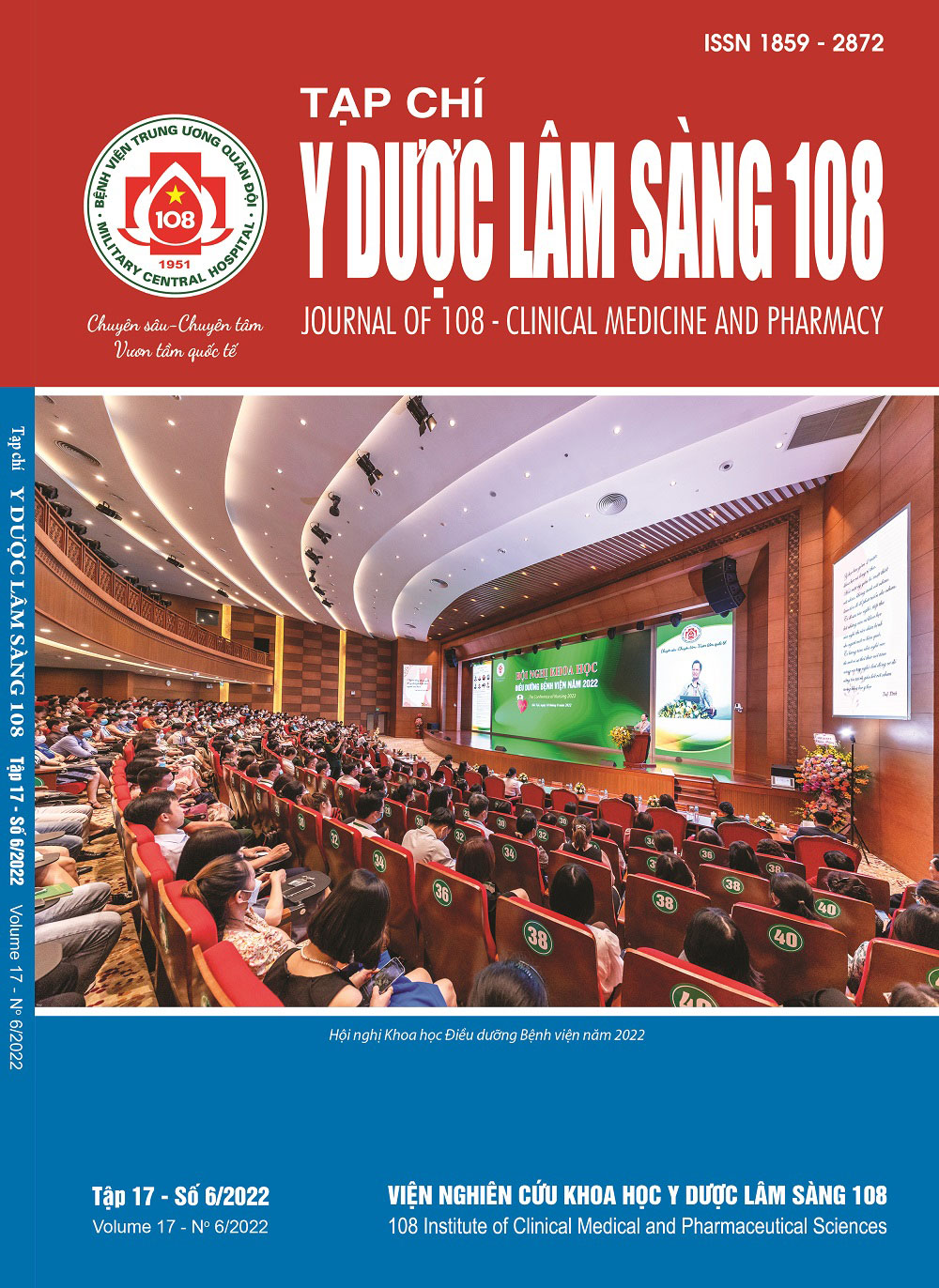Nursings’ attitude in monitoring the vital signs in the Vinmec Healthcare system
Main Article Content
Keywords
Abstract
Objective: To assess the attitude of nurses in monitoring vital signs in hospitals of Vinmec Health system. To find out some factors related to the attitude of nurses in monitoring vital signs at hospitals of Vinmec Health system. Subject and method: A cross-sectional descriptive study using self-completed questionnaire V-Scale, conducted from December 2021 to May 2022 on nurses working in inpatient departments in hospitals of the Vinmec Medical system. Result: There were 327 nurses participating in the study with age of under 30 years old (44%) and died 31-45 years old (51.1%), most of them were female (81.7%), university degree (62.0%), and seniority over 5 years (78.5%). The mean score of nurses' attitudes about monitoring vital signs was 55.9 ± 5.8. Age and working seniority were determined as two factors that had a statistically significant influence on the nursing attitude assessment score in monitoring vital signs with p<0.05. Conclusion: The actual status of nurses' attitude towards monitoring vital signs to early detect the patient's deterioration was modest. Together with misconceptions about the importance of vital signs and the failure to recognize vital signs deficits point to the need for retraining of nurses in knowledge related to vital signs and raising awareness of the importance of vital signs monitoring.
Article Details
References
2. Andersen LW, Kim WY, Chase M et al (2016) The prevalence and significance of abnormal vital signs prior to in-hospital cardiac arrest. Resuscitation 98: 112-117.
3. Chen J, Hillman K, Bellomo R et al (2009) The impact of introducing medical emergency team system on the documentations of vital signs. Resuscitation 80(1): 35-43.
4. De Meester K, Van Bogaert P, Clarke SP et al (2013) In-hospital mortality after serious adverse events on medical and surgical nursing units: A mixed methods study. J Clin Nurs 22(15-16): 2308-2317.
5. Fagan K, Sabel A, Mehler PS et al (2012) Vital sign abnormalities, rapid response, and adverse outcomes in hospitalized patients. Am J Med Qual Off J Am Coll Med Qual 27(6): 480-486.
6. Goldhill DR and McNarry AF (2004) Physiological abnormalities in early warning scores are related to mortality in adult inpatients. Br J Anaesth 92(6): 882-884.
7. Harrison GA, Jacques TC, Kilborn G et al (2005) The prevalence of recordings of the signs of critical conditions and emergency responses in hospital wards the SOCCER study. Resuscitation 65(2): 149-157.
8. Hodgetts TJ, Kenward G, Vlachonikolis IG et al (2002) The identification of risk factors for cardiac arrest and formulation of activation criteria to alert a medical emergency team. Resuscitation 54(2) 125-131.
9. Kellett J and Sebat F (2017) Make vital signs great again - A call for action. Eur J Intern Med 45: 13-19.
10. Leuvan CHV and Mitchell I (2008) Missed opportunities? An observational study of vital sign measurements. Crit Care Resusc J Australas Acad Crit Care Med 10(2): 111-115.
11. Mok W, Wang W, Cooper S et al (2015) Attitudes towards vital signs monitoring in the detection of clinical deterioration: Scale development and survey of ward nurses. Int J Qual Health Care J Int Soc Qual Health Care 27(3): 207-213.
12. Rose L and Clarke SP (2010) Vital signs. Am J Nurs 110(5): 11.
13. Sarı HY, Yöntem SÇ, Demir D et al (2012) 1879 Pediatric nurses knowledge and attitudes toward vital signs. Arch Dis Child 97(2): 530-530.
14. Sidani S, Guruge S, Miranda J et al (2010) Cultural adaptation and translation of measures: An integrated method. Res Nurs Health 33(2): 133-143.
15. Smith GB, Prytherch DR, Schmidt P et al (2006) Hospital-wide physiological surveillance-a new approach to the early identification and management of the sick patient. Resuscitation 71(1): 19-28.
 ISSN: 1859 - 2872
ISSN: 1859 - 2872
